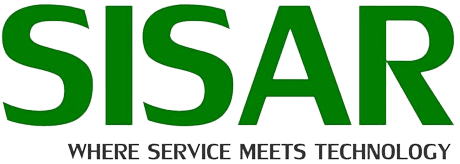Human capital management (HCM), now known as SAP Human Experience Management (HXM), emerges as a powerhouse solution in the ever-evolving human resources landscape. It serves as the linchpin for organizations seeking to streamline HR processes, enhance workforce management, and unlock strategic potential in managing their most valuable asset: their people.

In this enriched exploration, we will delve into the intricacies of SAP HCM and its essential functions.
The Essence of SAP HCM
SAP HCM, crafted by SAP SE, represents a sophisticated and tightly integrated software solution tailored to support and automate a broad spectrum of HR processes. As the central repository for managing employee-related data, SAP HCM empowers HR professionals to make informed decisions, elevate the employee experience, and ensure adherence to labor laws and regulations.
Unpacking the Modules Within SAP HCM
SAP HCM stands as a vast and comprehensive personnel management system. Though the method comprises an array of intricate components, we will spotlight the pivotal modules that serve as the backbone for the solution:
1. Personnel Administration (PA)
At the heart of SAP HCM lies Personnel Administration (PA), where all elements of human capital management converge. The crux is the personnel master record, a digital repository that replaces cumbersome paper-based procedures. It ensures that all personnel data remains impeccably current and readily accessible.
You’ll find more than primary employee data in this repository, such as names and addresses. Information such as organizational units, pay scales and pay scale groups find a home here, each meticulously time-stamped, offering a transparent historical record of changes. SAP HCM effectively lightens HR departments’ administrative load, allowing them to focus on strategic imperatives like recruitment and personnel development.
A noteworthy sub-module of Personnel Administration is “Personnel Cost Planning and Simulation (PA-CP).” Leveraging personnel master data, payroll results, and additional data sources, PA-CP empowers transparent and systematic personnel cost planning. It allows for scenario-based simulations, considering variables like salary adjustments and organizational restructuring. Moreover, planning outcomes can seamlessly transition into Controlling (CO) for financial planning.
2. Personnel Time Management (PT)
In today’s world, personnel time tracking is virtually ubiquitous across industries. SAP HCM PT offers support for various time recording methods, be it employees recording their working hours, time recording terminals, or manual entries by time administrators. To maximize automation, terminals or similar technologies are recommended for time recording. Entries are seamlessly transmitted to the SAP system, forming the foundation for processes such as payroll accounting.
For remote work or off-site tasks, browser-based time recording via self-service is a viable option, with SAP HCM offering this flexibility. Classic workflows in personnel time management, such as requests for flexible workdays, supplements, and corrections, are fully supported.
3. Payroll Accounting (PY)
Payroll accounting, the third pillar of personnel administration, encompasses all necessary information within SAP HCM. This includes master data like salary groups, working hours, various absence types, flexible salary components, and special payments. Thanks to regular updates, payroll accounting perpetually aligns with prevailing legal requirements.
To ensure accuracy and compliance, simulation runs precede the actual payroll processing. This preemptive step allows for error correction before the final payroll run. SAP HCM PY also accommodates different payroll periods, a precious feature for globally distributed companies.
4. Organizational Management (OM)
Organizational Management within SAP HCM meticulously maps an organization’s structure, spanning its hierarchical units. This module also aids in analyzing process organization and facilitates personnel analyses for workforce planning. OM offers tools to plan for impending organizational changes, serving as the foundation for functions like career planning and applicant management.
5. Personnel Development (Talent Management)
Talent management, a pivotal aspect of SAP HCM, specializes in matching vacant positions with existing human resources based on predefined criteria such as qualifications and personal interests. Simultaneously, it allows for the creation of individual employee career and development plans, complete with associated target agreements.
Talent management encompasses sub-modules, including Performance Management (PEM) and Learning Solutions (LSO). The cloud-based SAP SuccessFactors, integrated with SAP HCM, is now considered the successor to the talent management module, hinting at a gradual transition towards SuccessFactors in the foreseeable future.
6. Training and Event Management (PE)
Tightly intertwined with Personnel Development, Training, and Event Management in SAP HCM facilitates the planning, execution, and evaluation of events like training and continuing education. The system maintains a comprehensive event catalog, encompassing details like instructors, venues, and supporting documents. Events can be scheduled recurrently, and registrations can be efficiently managed.
Upon event completion, SAP HCM PE simplifies cost center assignment and invoicing. An automated function permits the direct transfer of qualifications to HR master data, generating a training history for each employee when necessary.
7. Recruitment (PB)
The Recruitment module in SAP HCM supports organizations in managing job openings and seamlessly transfers job requirements and descriptions to online platforms. It orchestrates various functions, from scheduling job interviews to setting application deadlines, with automation facilitating a comprehensive hiring process. Candidate-specific master data administration ensures a smooth transition of applicant data into HR master data upon hiring.
Additional Sub-modules
SAP HCM encompasses a multitude of sub-modules that address specific HR tasks. These include:
- Employee Self Services/Manager Self Services (ESS/MSS): Digitize workflows, allowing employees to initiate processes such as working time corrections, travel requests, and training bookings, enhancing efficiency and data security.
- Structural (Dynamic) Authorization Assignment: Unlike static authorization assignments, structural authorizations in conjunction with Organizational Management (OM) are dynamically assigned based on organizational job roles, bolstering IT security.
- Personnel Appraisals: Appraisals form the basis for salary adjustments, variable salary components, and bonuses, contributing to quality assurance of continuing education events when integrated with Training and Event Management.
The Advantages of SAP HCM for Corporate Human Resources
SAP HCM emerges as a beacon of efficiency in an HR landscape where administrative tasks dominate. Digitizing and streamlining personnel processes liberates HR departments from focusing on strategic objectives.
SAP HCM enhances HR operations by:
- Enabling digital vacation requests with approval workflows, streamlining administrative processes.
- Maintaining centralized, up-to-date personnel master data, ensuring transparency and data integrity.
- Automating payroll accounting and regular updates to comply with legal requirements.
- Supporting various time recording methods for flexibility.
- Facilitating the mapping of organizational structures and workforce planning.
- Empowering talent management and individual employee development.
- Streamlining recruitment processes and integrating applicant data seamlessly.
Notably, SAP HCM can be introduced incrementally, allowing organizations to implement core modules initially and expand gradually to suit specific needs.
Conclusion
SAP HCM is a cornerstone for modern HR management, offering a robust suite of tools to optimize processes, elevate the employee experience, and strategically shape the workforce. As organizations evolve, SAP HCM remains a trusted ally in achieving HR excellence.






